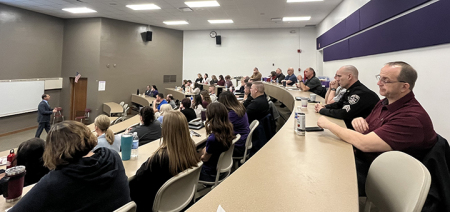National Agriculture Day 2020
Published:
March 18th, 2020
By:
Joe Angelino
Around this time each year, America celebrates and recognizes the agriculture industry. Here we know agriculture is the real big business in the county which has employers and employees in every single town.
In New York State, there are countless businesses, colleges, and government agencies all focused on the support of the farmer, rancher, and even the beekeeper. Rightfully so, because everyone needs to eat, wear natural fiber clothing, and, in some cases, fuel their vehicles.
With the current world uncertainty surrounding the COVID-19 virus, it is guaranteed there is more than one family considering a backyard vegetable garden this spring. Growing one’s own food was the way it used to be; at some point in history, everyone was in the agriculture business if they wanted to eat.
Over the years, there has been so much advancement in technology and methods in agriculture only a small number of people, known as farmers, can feed the rest of the world’s population. The latest statistics show the average American farmer feeds approximately 166 other people.
This Friday, March 20, 2020, the Chenango County Farm Bureau was scheduled to celebrate Ag-Day Chenango with a luncheon at the Silo Restaurant in Coventry. In the daily changes to our lives in response to public health, this gathering is canceled. As a longtime member of the Chenango County Farm Bureau, this column will serve as a press release to highlight some of the good things agriculture brings to all of us.
The American farmer produces more food than Americans can consume. The excess food is sent all over the world. The export of nutritious food products helps off-set some trade deficits with other countries. As a matter of fact, agricultural products are the number one exported item from the United States to the rest of the world.
Because farms in the United States are so efficient, the retail cost of food and fiber products for Americans is lower than any other country on earth. The percentage of our income spent on food has dropped by half over the last 50 years. It is estimated we only spend about 2 percent of our annual income on meat, poultry, and other food staples.
In rural Chenango County and most of upstate New York, we are surrounded by the agricultural industry. Farming and dairy operations require all sorts of other sectors in the long chain of related business; veterinarians, feed mills and stores, equipment supply and repair, banking, trucking, insurance, fuel, and retail outlets, to name a few.
Farming and agriculture is historically vital to New York it is actually enshrined in our state constitution, Article 14, Section 4; “The policy of the state shall be to conserve and protect its natural resources and scenic beauty and encourage the development and improvement of its agricultural lands for the production of food and other agricultural products.”
A favorite segment at each year’s Ag-Day luncheon is the introduction of the FFA students, the Future Farmers of America, from area high schools. These students are always well-spoken and enthusiastic about the agricultural industry. Not all schools in Chenango County have an FFA chapter. Still, instead they might have an agriculture curriculum or possibly an Ag-Club. But all are helping keep farming in the bloodstream of our youth.
Keeping our youth interested in farming and agriculture is very important because the average age of a farmer in the USA is about 62 years of age. Nearly every farm in our region is a family-owned business, and agriculture is an excellent way to keep our next generation from leaving the area looking for employment.
In closing, in light of our recent world events, it is readily apparent how important agriculture is to our country. By the looks of shelves in stores, people are coming to grips with the fact food doesn’t come from a supermarket. Our food actually comes from a hardworking family-owned farm that is vital to our nation’s economy and safety. Thank you, farmers, and also to the Farm Bureau.
Author: Joe Angelino - More From This Author
Comments




